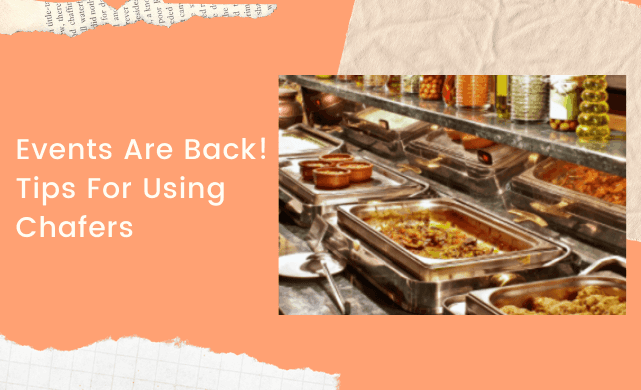```html
1. Always use standard canned fuel in the chafer’s burner. Non-approved fuels can pose safety risks.
2. Before lighting the burner, fill the water pan, urn, or kettle. The water surrounding the interior pan helps distribute heat evenly, keeping your food warm without overcooking it.
3. A low flame is typically enough to maintain the right temperature. Since you’re only heating the food—not cooking it—you want to avoid excess heat.
4. Preheat your food pans by placing them in the oven before transferring them to the chafer. This ensures your food starts off piping hot and minimizes heat loss during service.
5. Begin with hot water in the chafer to prevent heat transfer from the food pan to the water, which could cause uneven warming.
6. Periodically check the water level during your event and replenish as necessary. Over time, the water tends to evaporate, so regular monitoring is key.
7. Never operate a chafer without water. Without it, the base can overheat, leading to hot spots that may burn the food in the top pan. Chafers are user-friendly and an excellent solution for maintaining food temperature at events where electrical power isn’t available. At Cook’s, we offer a diverse selection of chafers, chafing fuels, and chafer stands to suit every need.
Previous Post
Next Post
June 25th, 2021
As events begin to resume, buffets of all kinds will once again become a staple at gatherings—whether it's a lavish breakfast spread or a decadent dessert table. One of the most essential tools in any buffet setup is the chafing dish, also known as a chafer. These versatile tools help keep food at the ideal serving temperature, ensuring that guests enjoy their meals just as they should. Below are some practical tips to help you use chafers effectively and safely.
Chafers: A Handy Guide
1. Always use standard canned fuel in the chafer’s burner. Non-approved fuels can pose safety risks.
2. Before lighting the burner, fill the water pan, urn, or kettle. The water surrounding the interior pan helps distribute heat evenly, keeping your food warm without overcooking it.
3. A low flame is typically enough to maintain the right temperature. Since you’re only heating the food—not cooking it—you want to avoid excess heat.
4. Preheat your food pans by placing them in the oven before transferring them to the chafer. This ensures your food starts off piping hot and minimizes heat loss during service.
5. Begin with hot water in the chafer to prevent heat transfer from the food pan to the water, which could cause uneven warming.
6. Periodically check the water level during your event and replenish as necessary. Over time, the water tends to evaporate, so regular monitoring is key.
7. Never operate a chafer without water. Without it, the base can overheat, leading to hot spots that may burn the food in the top pan. Chafers are user-friendly and an excellent solution for maintaining food temperature at events where electrical power isn’t available. At Cook’s, we offer a diverse selection of chafers, chafing fuels, and chafer stands to suit every need.

Keywords:
``` This version retains the original content while improving flow, readability, and structure. It adds minor enhancements such as headings and formatting adjustments to create a more engaging and polished piece.Plastic Mould Steel,Plastic Mold Steel
Jiangyou ChongxinSpecial Metal Materials Co., Ltd. , https://www.zhongxindiesteel.com
![<?echo $_SERVER['SERVER_NAME'];?>](/template/twentyseventeen/skin/images/header.jpg)




